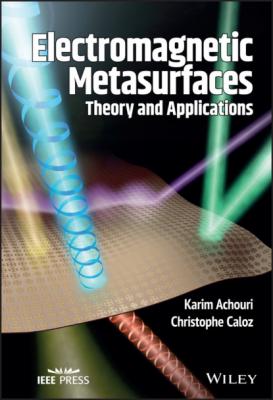1 EndFraction plus StartFraction StartAbsoluteValue upper U 2 Superscript left-parenthesis minus right-parenthesis Baseline EndAbsoluteValue squared Over eta 2 EndFraction equals StartFraction StartAbsoluteValue upper U 1 Superscript left-parenthesis minus right-parenthesis Baseline EndAbsoluteValue squared Over eta 1 EndFraction plus StartFraction StartAbsoluteValue upper U 2 Superscript left-parenthesis plus right-parenthesis Baseline EndAbsoluteValue squared Over eta 2 EndFraction comma"/>
where and are the impedances of medium 1 and 2, respectively, and are assumed to be real quantities. Substituting (2.78) into (2.79), and considering that , yields
(2.80)
Since this equality holds for any field value, all the terms in brackets must vanish. We have thus
(2.81)
which indicates how the incident power distributes in terms of the reflected and transmitted power, and
(2.82)
which implies that the phases of the scattered waves are related to each other.
For a reciprocal slab with the same media at both sides, i.e. , these expressions reduce to
(2.83)
and
(2.84)
where by reciprocity. Interestingly, if the slab is gainless, lossless, reciprocal, and isotropic, as for instance a thin beam splitting blade, then and (Eq. 2.84) tells us that the argument of must necessarily be in quadrature with respect to .
2.7 Classification of Bianisotropic Media
It is sometimes convenient to classify bianisotropic media in terms of their tensorial constitutive parameters. For this purpose, we split the susceptibility tensors and into a tensor, , related to nonreciprocity, and a tensor, , related to chirality [148], as
(2.85)
Table 2.3 classifies the reciprocal ( and ) and nonreciprocal ( and ) bianisotropic media depending on whether the tensors or are diagonal or not, and symmetric or antisymmetric, respectively. This classification relies on the fact that an arbitrary tensor , which may represent either (for a reciprocal medium) or (for a nonreciprocal
